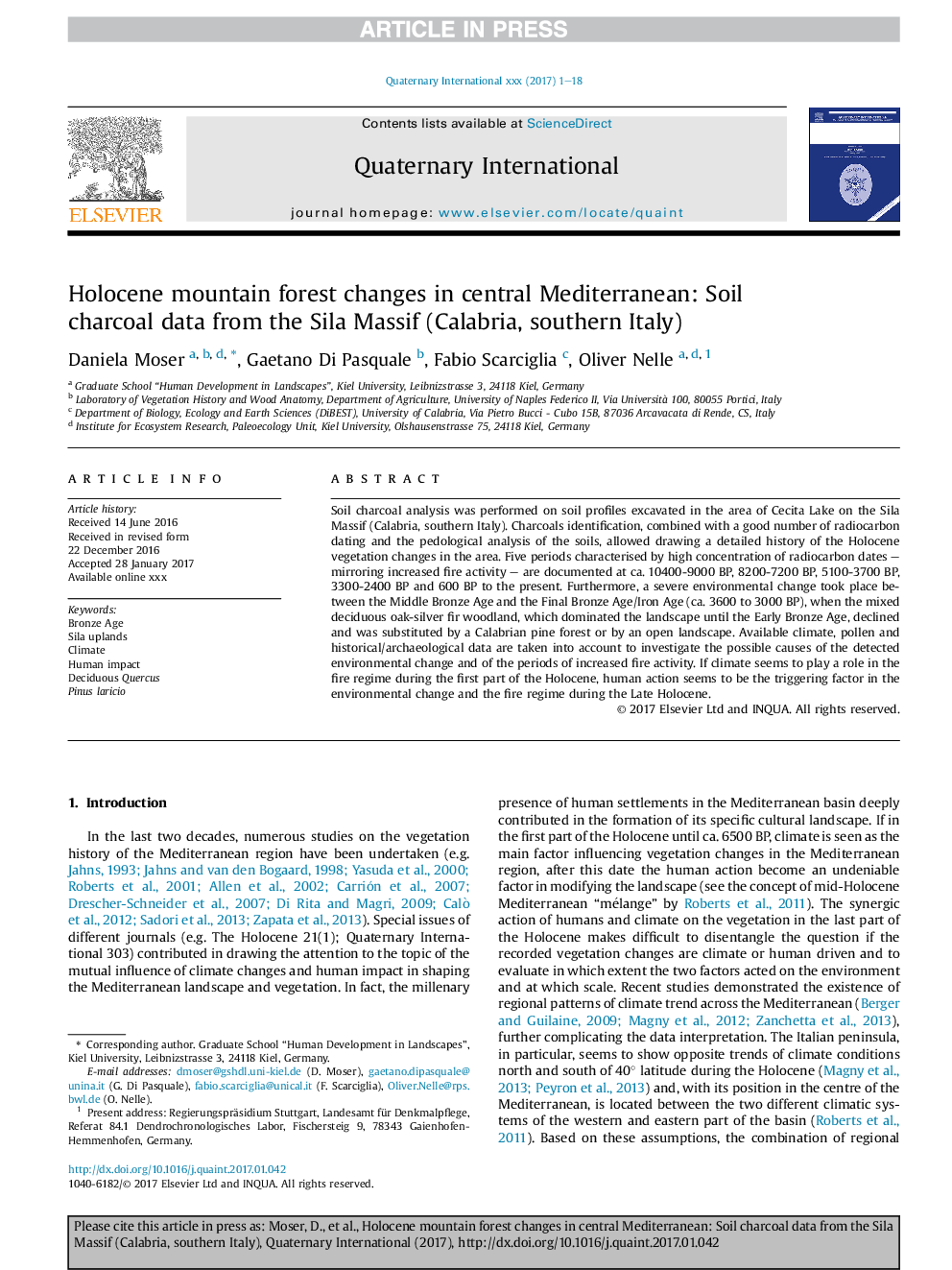| Article ID | Journal | Published Year | Pages | File Type |
|---|---|---|---|---|
| 7451243 | Quaternary International | 2017 | 18 Pages |
Abstract
Soil charcoal analysis was performed on soil profiles excavated in the area of Cecita Lake on the Sila Massif (Calabria, southern Italy). Charcoals identification, combined with a good number of radiocarbon dating and the pedological analysis of the soils, allowed drawing a detailed history of the Holocene vegetation changes in the area. Five periods characterised by high concentration of radiocarbon dates - mirroring increased fire activity - are documented at ca. 10400-9000 BP, 8200-7200 BP, 5100-3700 BP, 3300-2400 BP and 600 BP to the present. Furthermore, a severe environmental change took place between the Middle Bronze Age and the Final Bronze Age/Iron Age (ca. 3600 to 3000 BP), when the mixed deciduous oak-silver fir woodland, which dominated the landscape until the Early Bronze Age, declined and was substituted by a Calabrian pine forest or by an open landscape. Available climate, pollen and historical/archaeological data are taken into account to investigate the possible causes of the detected environmental change and of the periods of increased fire activity. If climate seems to play a role in the fire regime during the first part of the Holocene, human action seems to be the triggering factor in the environmental change and the fire regime during the Late Holocene.
Keywords
Related Topics
Physical Sciences and Engineering
Earth and Planetary Sciences
Geology
Authors
Daniela Moser, Gaetano Di Pasquale, Fabio Scarciglia, Oliver Nelle,
